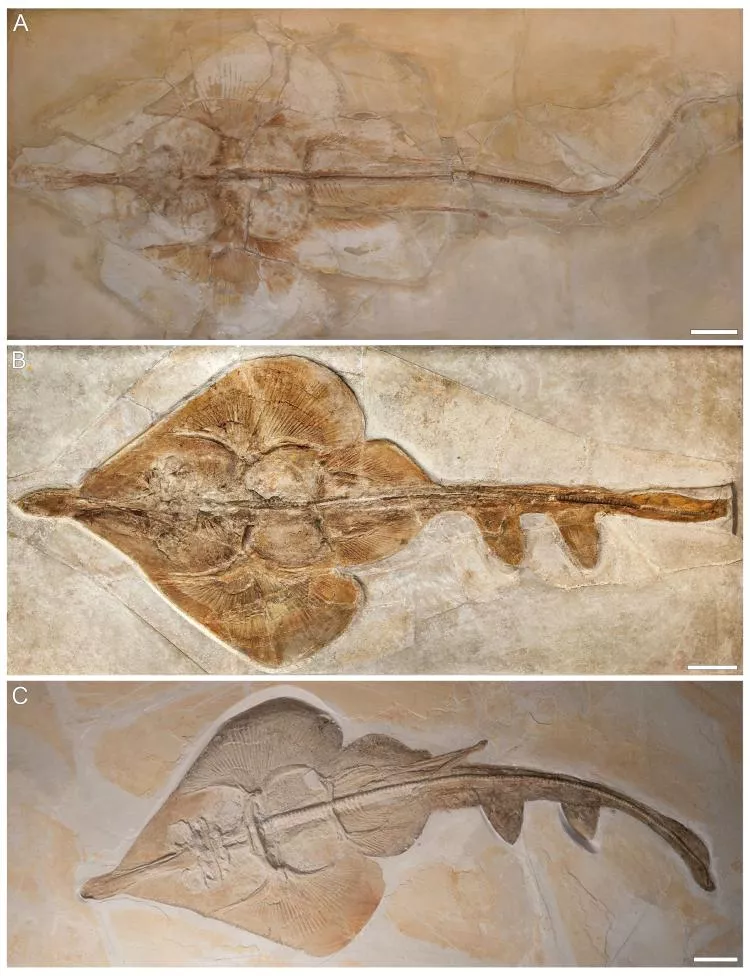Scientists Discover 150 Million-Year-Old Species of Rays
Scientists uncover a new species, Aellopobatis bavarica, revealing unprecedented ray diversity in the Jurassic period.
In a groundbreaking study led by the University of Vienna, researchers have unearthed evidence suggesting that the seas of the Jurassic era, some 150 million years ago, teemed with a diversity of ray species far beyond what was previously understood. The discovery of a new species, named Aellopobatis bavarica, provides fascinating insights into the evolutionary history of these ancient marine animals.
A dive into the past
The study, published in the esteemed journal Papers in Palaeontology, marks a significant leap in our understanding of marine life in the Jurassic period. Fossils of Aellopobatis bavarica have been meticulously analysed, revealing unique features that distinguish it from modern rays and its contemporaries alike.
Characterised by its distinct skeletal structure and teeth patterns, Aellopobatis bavarica showcases the evolutionary innovation within the ray lineage. This species, found in the Solnhofen limestones of Bavaria, Germany, highlights the adaptive strategies rays have developed to thrive in their environments.
Implications for evolutionary biology
The discovery of Aellopobatis bavarica challenges previous notions of ray diversity during the Jurassic era, suggesting a complex ecosystem in which these creatures played a significant role.
The find, according to study experts, not only adds to our knowledge of the diversity of rays throughout this time period but also sheds light on the evolutionary pressures that moulded the marine environments of the era.
The significance of Aellopobatis bavarica extends beyond its mere existence; it offers a window into the past, revealing the intricate web of life that existed in our oceans millions of years ago. As scientists continue to unravel the mysteries of the Jurassic seas, each discovery like this brings us closer to understanding the origins and evolution of marine life on Earth.

























